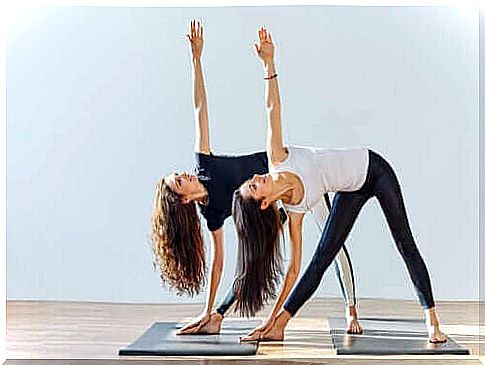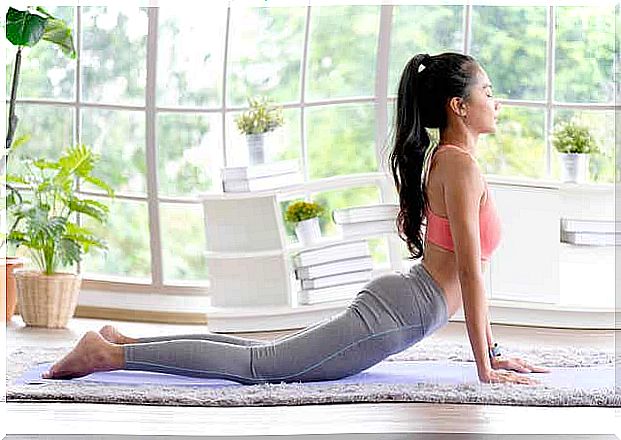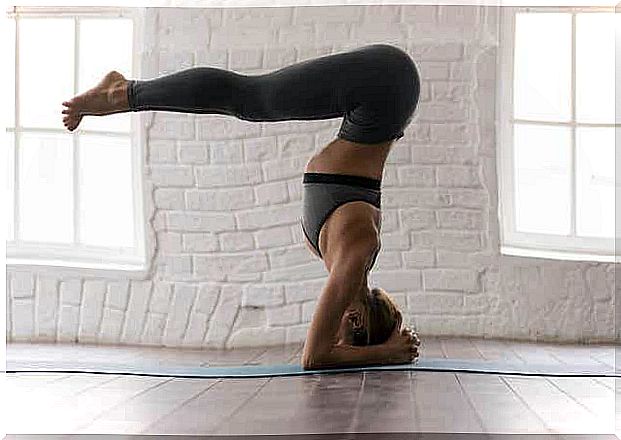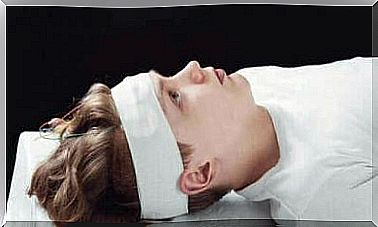What Is Yoga For Osteoarthritis?

Yoga is a practice that brings various benefits to those who practice it. But is there yoga for osteoarthritis ? Find out the answer to this question by reading today’s article.
It turns out that yoga for osteoarthritis actually works.
Yoga is an ancient practice that originated in India and is considered a lifestyle rather than a sport or physical activity. The many and varied benefits of yoga have been proven, from helping you maintain proper body posture to managing daily stress and a variety of illnesses.
But is there yoga for osteoarthritis? To answer that question, in the following article we will look at the symptoms of this condition and a few simple routines that you can do at home.
What is osteoarthritis?

Osteoarthritis is a chronic disease that most often affects people over the age of 60. However, it can affect people of all ages, mostly adults.
This disease affects the locomotor system, especially the health of the joints is devastating. The most common symptoms of osteoarthritis include:
- Pain when you move
- Soreness in the affected area,
- Swelling and stiffness
- Loss of flexibility,
- Inflammation of the synovial membrane,
- The occurrence of deformities,
- The development of inflammation,
- The appearance of bone growths.
Experts distinguish several risk factors that increase the likelihood of developing osteoarthritis.
These include, but are not limited to, age, gender (women are more susceptible), obesity, trauma, stress or fatigue (in sports and work life), as well as genetic factors and certain metabolic diseases such as hemochromatosis.
Osteoarthritis is a condition that develops slowly and gradually and affects the quality of life of those who suffer from it. So far, no cure for this disease has been found.
There are several types of therapy that have been shown to help fight osteoarthritis. Their goal is to relieve symptoms and include:
- Surgical intervention (joint endoprosthesis implantation),
- Drugs (painkillers and other non-steroidal anti-inflammatory drugs, cortisone injections)
- Physiotherapy and rehabilitation.
In addition, there are several habits that help in the fight against osteoarthritis, positively influencing its treatment, reducing symptoms and inhibiting its development.
Is There Yoga For Osteoarthritis?
Practicing yoga is one of the activities that can reduce the discomfort of osteoarthritis. The benefits of yoga are in several areas, for example:
- Strength and grip
- Flexibility,
- Balance,
- Coping with stress
- Well-being,
- Quality of life.
This is why many specialists recommend yoga as an adjunct therapy to conventional osteoarthritis treatments. But is there any scientific evidence to back this up? Let’s take a look at what scientists say.
Research on the use of yoga in the treatment of osteoarthritis

In 2019, a review of studies describing the effectiveness of yoga in treating osteoarthritis was performed. We analyzed 640 patients aged 50 to 80, mainly women, with osteoarthritis of the lower extremities.
The results showed little evidence of a positive effect of yoga in treating pain from osteoarthritis compared to other exercises. It was also not possible to find sufficient evidence of its impact on the quality of life of patients.
Despite this, researchers find practicing yoga useful in treating osteoarthritis of the knees.
Another review included a meta-analysis of the integrative effect of yoga practice on patients suffering from osteoarthritis of the knee.
This review focused on aspects such as pain reduction, functional recovery, and the general well-being of patients suffering from this disease in the aforementioned joint.
Thirteen clinical trials were analyzed, involving 1,557 patients with osteoarthritis of the knee joint and rheumatoid arthritis. The results suggest that group yoga training helps reduce arthritis symptoms, supports physical function, and improves overall well-being.
In terms of clinical trials, a study of 66 patients aged 30 to 75 years who also suffered from osteoarthritis of the knee also looked at the effect of an Integrated Therapeutic Yoga Approach (IAYT).
The results obtained from the research group using the IAYT approach showed a significant improvement in LHGS (left hand compression force) and knee extension compared to the control group.
Finally, a study of the effects of Hatha yoga on osteoarthritis of the knee showed that after eight weeks of exercising this type of activity, there was a reduction in pain and other symptoms. There has also been an improvement in performance of daily activities and an improvement in quality of life.
Yoga for osteoarthritis
There are many varieties of yoga. However, the Arthritis Foundation made several recommendations because some types of yoga were found to work better for patients suffering from osteoarthritis. These include iyengar, anusara, kripalu, and viniyoga.
In addition, there are specific yoga routines, exercises, and postures that you can do on your own to help reduce the symptoms of osteoarthritis. Here are the most important of them:
Top position in the fight against osteoarthritis
The position of the top is very simple. You start off by standing with your big toes together and your heels slightly apart. By taking a deep breath, you open your chest and place your hands folded together as if in prayer at heart level. Then raise it above your head and point it upwards towards the sky.
The position of the warrior
A warrior is a pose that works out the muscles of the abdomen, legs, and buttocks. To do this, stand firmly with your feet apart so that the heel of the front foot is approximately four feet from the big toe of the foot behind it.
Then turn the leg (right if it’s the right leg and left if it’s the left leg) and bend the knee to form a right angle. Then lift your hands up, with your palms clasped together, stretching them as high as you can. Take a deep breath and switch legs.
In addition to the shoemaker in the fight against osteoarthritis
Do this exercise while sitting on the floor with your legs stretched out in front of you. Then bend your knees, bringing the soles of your feet together and trying to bring your heels closer to your pelvis.
Let your knees drop to the sides without pressing them down, which means trying to open them up more. Hold this position for a minute. Then extend your legs and return to the starting position.
Sugar cane position
Start in a position similar to the previous one: sit on the floor with your legs together and stretch them out in front of you without bending them at the knees. If you have to or feel more comfortable, you can sit on the mat.
Your back should stay straight. Your hands should be at your sides, facing up. In turn, your feet should be straightened with the soles facing forward. Stay in this position for a minute.
Does yoga for osteoarthritis really exist?

If you suffer from osteoarthritis, yoga is a complementary therapy worth trying as an alternative. But yoga cannot replace the treatment prescribed by your doctor.
It is best to find a professional instructor who has experience working with people with similar symptoms. In addition, it is worth asking your doctor what exercises you can do.
Remember that in order to get the most out of yoga, there are three aspects you need to keep in mind :
- Awareness and breathing techniques,
- Strength, flexibility and balance of movements,
- Relaxation and meditation.
Also, as with any exercise, start yoga slowly and keep your movements smooth until your body is warm. Therefore, it is worth warming up before starting training.
Finally, remember that you need to listen to your body and pay attention to the signals it sends out. If you experience pain or discomfort, it means you need to stop. The idea is to reduce pain and improve your quality of life, not to make you feel worse.









